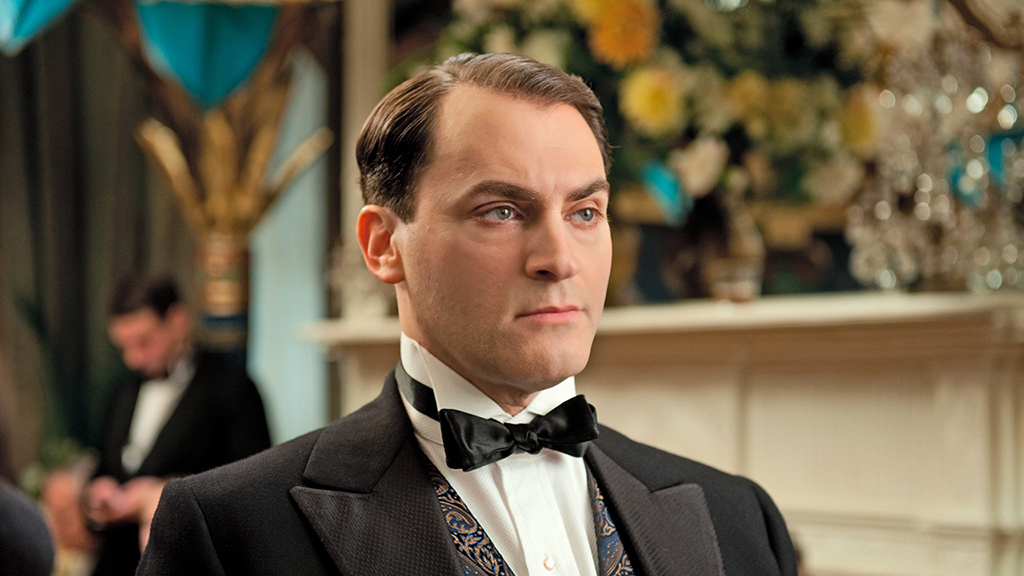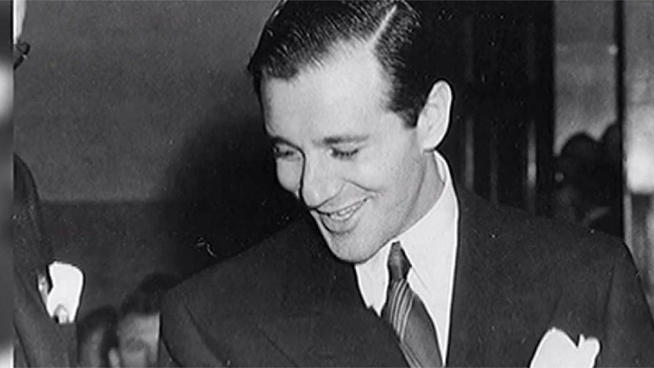
American Jewish Mobsters of the 1920s
There are few excuses for the behavior of Jewish gangsters in the 1920s and 1930s. The best known Jewish gangsters – Meyer Lansky, Bugsy Siegel, Longy Zwillman, Moe Dalitz — were involved in the numbers rackets, illegal drug dealing, prostitution, gambling and loan sharking. They were not nice men. During the rise of American Nazism in the 1930s and when Israel was being founded between 1945 and 1948, however, they proved staunch defenders of the Jewish people.
The roots of Jewish gangsterism lay in the ethnic neighborhoods of the Lower East Side; Brownsville, Brooklyn; Maxwell Street in Chicago; and Boyle Heights in Los Angeles. Like other newly arrived groups in American history, a few Jews who considered themselves blocked from respectable professions used crime as a means to “make good” economically. The market for vice flourished during Prohibition and Jews joined with others to exploit the artificial market created by the legal bans on alcohol, gambling, paid sex and narcotics.
Few of these men were religiously observant. They rarely attended services, although they did support congregations financially. They did not keep kosher or send their children to day schools. However, at crucial moments they protected other Jews, in America and around the world.
The 1930s were a period of rampant anti-Semitism in America, particularly in the Midwest. Father Charles Coughlin, the Radio Priest in Detroit, and William Pelley of Minneapolis, among others, openly called for Jews to be driven from positions of responsibility, if not from the country itself. Organized Brown Shirts in New York and Silver Shirts in Minneapolis outraged and terrorized American Jewry. While the older and more respectable Jewish organizations pondered a response that would not alienate non-Jewish supporters, others – including a few rabbis –asked the gangsters to break up American Nazi rallies.
Historian Robert Rockaway, writing in the journal of the American Jewish Historical Society, notes that German-American Bund rallies in the New York City area posed a dilemma for mainstream Jewish leaders. They wanted the rallies stopped, but had no legal grounds on which to do so. New York State Judge Nathan Perlman personally contacted Meyer Lansky to ask him to disrupt the Bund rallies, with the proviso that Lansky’s henchmen stop short of killing any Bundists. Enthusiastic for the assignment, if disappointed by the restraints, Lansky accepted all of Perlman’s terms except one: he would take no money for the work. Lansky later observed, “I was a Jew and felt for those Jews in Europe who were suffering. They were my brothers.” For months, Lansky’s workmen effectively broke up one Nazi rally after another. As Rockaway notes, “Nazi arms, legs and ribs were broken and skulls were cracked, but no one died.”
Lansky recalled breaking up a Brown Shirt rally in the Yorkville section of Manhattan: “The stage was decorated with a swastika and a picture of Hitler. The speakers started ranting. There were only fifteen of us, but we went into action. We … threw some of them out the windows. . . . Most of the Nazis panicked and ran out. We chased them and beat them up. . . . We wanted to show them that Jews would not always sit back and accept insults.”
In Minneapolis, William Dudley Pelley organized a Silver Shirt Legion to “rescue” America from an imaginary Jewish-Communist conspiracy. In Pelley’s own words, just as “Mussolini and his Black Shirts saved Italy and as Hitler and his Brown Shirts saved Germany,” he would save America from Jewish communists. Minneapolis gambling czar David Berman confronted Pelley’s Silver Shirts on behalf of the Minneapolis Jewish community.
Berman learned that Silver Shirts were mounting a rally at a nearby Elks’ Lodge. When the Nazi leader called for all the “Jew bastards” in the city to be expelled, or worse, Berman and his associates burst in to the room and started cracking heads. After ten minutes, they had emptied the hall. His suit covered in blood, Berman took the microphone and announced, “This is a warning. Anybody who says anything against Jews gets the same treatment. Only next time it will be worse.” After Berman broke up two more rallies, there were no more public Silver Shirt meetings in Minneapolis.
Jewish gangsters also helped establish Israel after the war. One famous example is a meeting between Bugsy Siegel and Reuven Dafne, a Haganah emissary, in 1945. Dafne was seeking funds and guns to help liberate Palestine from British rule. A mutual friend arranged for the two men to meet. “You mean to tell me Jews are fighting?” Siegel asked. “You mean fighting as in killing?” Dafne answered in the affirmative. Siegel replied, “I’m with you.” For weeks, Dafne received suitcases filled with $5 and $10 bills — $50,000 in all — from Siegel.
No one should paint gangsters as heroes. They committed acts of great evil. Historian Rockaway has presented a textured version of Jewish gangster history in a book ironically titled, But They Were Good to their Mothers. Some have observed that, despite their disreputable behavior, they could be good to their people, too.
———————————————————————————————————————————————————
Bugsy Siegel
Born Benjamin Siegel, on February 28, 1906, in Brooklyn, New York. The son of Jewish immigrants, Siegel was raised in the crime-ridden section of Williamsburg, where Irish and Italian gangs were prevalent. As a teenager, he extorted money from pushcart peddlers on New York City’s Lower East Side. In 1918, Siegel befriended fellow hooligan Meyer Lansky, with whom he established the Bugs-Meyer Gang—a band of ruthless Jewish mobsters that ran a group of contract killers under the name Murder, Inc.
During the 1920s, Mafia kingpin Charles “Lucky” Luciano and a number of other Italian gangsters organized themselves into a national syndicate. Nicknamed Bugsy for his volatile nature, Siegel became a prominent player in this newly established group of criminals.With a goal of killing off many of New York’s veteran gangsters, Siegel was one of four hit men hired to execute Sicilian mobster Joe “the Boss” Masseria in 1931.
In 1937, Siegel relocated his bootlegging and gambling rackets to the West Coast. Settling in California, he set up gambling dens and offshore gambling ships, while also consolidating the already existing prostitution, narcotics, and bookmaking rackets. He maintained an extravagant lifestyle in Beverly Hills, where he bought a palatial estate, frequented parties, and rubbed elbows with Hollywood moguls and starlets.
In the late 1930s, Siegel began dating actress Virginia Hill. They were a striking couple known as much for their violent natures as for their glamorous looks. In 1945, the two moved to Las Vegas, where Siegel began working toward his dream of building a gambling mecca in the Nevada desert. With funding from the eastern crime syndicate, construction of the Flamingo Hotel and Casino began under Siegel’s supervision.
Originally budgeted at $1.5 million, the building project soon proved to be a problem as construction costs soared to more than $6 million. When it was discovered that many of the overruns were attributable to Siegel’s theft and mismanagement, Lansky (now a prominent member of the eastern syndicate) became enraged by his betrayal. On the evening of June 20, 1947, Siegel was brutally killed, when a fusillade of bullets crashed through his living room window in Beverly Hills. Simultaneously, three of Lansky’s cohorts entered the Flamingo Hotel and declared a takeover. Although Lansky denied involvement in the hit, there is little doubt that Siegel was murdered on syndicate orders.
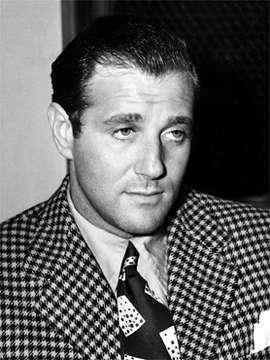
——————————————————————————————————————————————————–
Meyer Lansky
Maier Suchowljansky (Meyer Lansky), the son of Jewish parents, was born in Grodno, Russia (now in Poland) on July 4, 1902. The family moved to the United States in 1911 and the settled in New York. After leaving school he became an apprentice toolmaker.
In 1920, Lansky met Bugsy Siegel and Lucky Luciano. The three young men became involved in crime and by the 1920s Lansky had his own gang and was involved in bootlegging and the protection racket.
Lansky also worked for New York’s leading crime boss, Joe Masseria. In 1931, Lansky joined with other gang members, Lucky Luciano, Bugsy Siegel and Albert Anastasia, in the killing of Masseria.
In 1936, Lansky established gambling operations in Florida, New Orleans and Cuba. He was also the major investor in the Flamingo Hotel and Casino started by Bugsy Siegel in Las Vagas. He arranged Siegel’s execution in June 1947 when he became convinced that his partner was fiddling the books.
By the 1960s, Lansky was involved in drug smuggling, pornography, prostitution and extortion. He had also invested heavily in legal businesses such as hotels and golf-courses. It was estimated at the time that his total holdings were worth $300,000,000.
In 1970 plans were made to arrest Lansky on suspicion of income-tax evasion. When Lansky heard the news he fled to Israel. He was eventually arrested and returned to the United States, but, in 1973, he was acquitted of income-tax evasion. Other charges were abandoned because of Lansky’s poor health.
Meyer Lansky died of lung cancer in Miami Beach, Florida, on May 15, 1983. It has been estimated that when he died Lansky was worth more than $400 million.
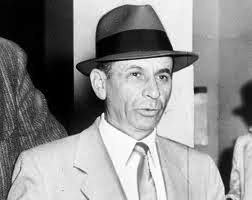
——————————————————————————————————————————————————-
Arnold Rothstein
Nothing gave a stronger boost to organized crime in America than Prohibition, which took effect on January 16, 1920. The ban on the manufacture and sale of drinking alcohol did nothing to dry up the demand for whiskey and wine. Some observers speculated, in fact, that banning alcoholic beverages made them more appealing to those who might otherwise not have indulged. In 1989, retired Detroit gangster Hershel Kessler told historian Robert Rockaway that, during Prohibition, “People wanted booze, they wanted dope, they wanted to gamble and they wanted broads. For a price, we provided them with these amusements. We only gave them what they wanted.”
Historians speculate that Jews comprised half of the nation’s leading bootleggers and that Jewish gangsters like Meyer Lansky and Bugsy Siegel dominated organized crime certain cities. Of course, with the largest Jewish population, New York produced the largest number of Jewish gangsters. The kingpin of the New York Jewish underworld was not a street tough gangster, but a refined gambler: Arnold Rothstein. According to Rockaway, “Rothstein is recognized as the pioneer big businessman of organized crime in the United States.”
Historian Leo Katcher described Rothstein as “the J. P. Morgan of the underworld; its banker and master of strategy.” Meyer Lansky, a man of some intelligence himself, observed, “Rothstein had the most remarkable brain. He understood business instinctively and I’m sure that if he had been a legitimate financier he would have been just as rich as he became with his gambling and the other rackets he ran.”
Rothstein was born with a business pedigree. His father, wealthy businessman Abraham Rothstein, was dubbed by New York governor Al Smith “Abe the Just.” A pious man with a reputation for philanthropy and honesty, Abraham Rothstein served as chairman of the board of New York’s Beth Israel Hospital. His older son became a rabbi. Younger son Arnold was interested in business, but not his father’s type. After flunking out of school because he spent his time and money gambling, Arnold Rothstein figured out that “if anyone was going to make money out of gambling he had better be on the right side of the fence. I was on the wrong end of the game.” In his late 20’s, Rothstein opened a gambling parlor. By 1912, when he was thirty, Rothstein was a millionaire from the profits of his gambling parlors and the racetracks he owned.
As Rockaway observes, “With gambling as his base, Rothstein had access to the cash and political protection needed to make big deals in many other spheres,” notably bootlegging. He was among the first to purchase fine liquor in England, smuggle it to America by the boatload and distribute it to the “speakeasies” and “blind pigs” that replaced legal taverns during Prohibition.
Rothstein did not stay in liquor smuggling for long. The business was too decentralized for him to control and the profit margins were small. Rothstein turned his experience as an “importer” to narcotics smuggling, a far more lucrative and less competitive business. By 1926, Rothstein was the “financial overlord” of the American narcotics trade.
Rothstein had an eye for talent. His henchmen during the 1920s included celebrity thugs such as “Legs” Diamond, “Lucky” Luciano, Dutch Schultz and Frank Costello. Luciano worshipped Rothstein. “He taught me how to dress … how to use knives and forks and things like that at the dinner table, about holdin’ a door open for a girl,” Luciano reminisced. “If Arnold had lived a little longer, he could’ve made me pretty elegant.
Rothstein captured the public imagination. Damon Runyan modeled the character Nathan Detroit in Guys and Dolls after Rothstein. In The Great Gatsby, F. Scott Fitzgerald called his Rothstein-based character Meyer Wolfsheim. Nothing Rothstein accomplished in his life of gambling, bootlegging and dealing drugs compares, however, with his fixing the World Series – the Black Sox Scandal of 1919.
In 1919, baseball was truly “America’s pastime.” Because they considered themselves grossly underpaid by team owner Charles Comisky, eight members of the Chicago White Sox, led by first baseman Chick Gandil, conspired to lose the World Series to the Cincinnati team– if they could find a gambler willing to pay them to lose. Gandil approached Abe Attell, a former featherweight boxing champion who fought under the name “the little Hebrew” and who, in retirement, served as Arnold Rothstein’s bodyguard. Gandil told Attell that, for $100,000, he could guarantee that his teammates would lose to Cincinnati. By most accounts, Rothstein rejected Attell’s initiative, sensing that Attell wanted to build his own reputation as an important gambler. Rothstein apparently did arrange, through another intermediary, to pay the White Sox players $80,000 on the condition that they lose. They did, and Rothstein made a significant sum betting against Chicago.
In 1921, the eight players were convicted of fraud and banned from baseball. Abe Attell was convicted of trying to fix the Series. Rothstein, who never met the players and could honestly say that he never approved Attell’s scheme, testified in his own behalf and was acquitted.
In 1928, a fellow gambler shot Rothstein. True to the underworld code, he died several days later without revealing his assailant’s name. Historian Rockaway reports, “Out of respect for the older Rothstein, Arnold received an Orthodox Jewish funeral with the renowned Orthodox rabbi, Leo Jung, delivering the eulogy.”
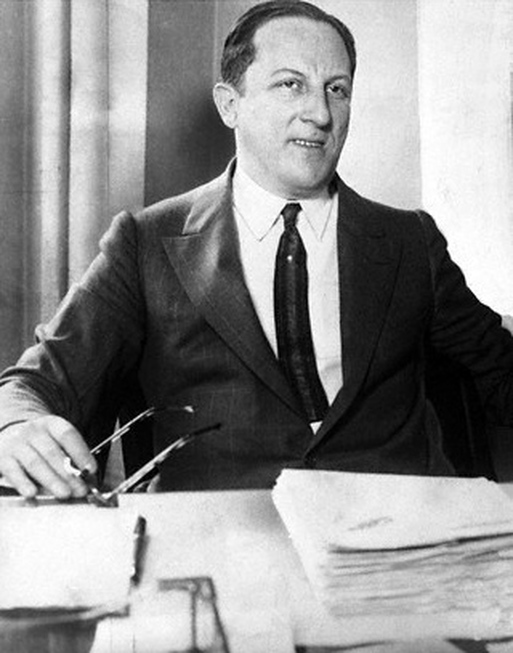
All of these men are also characters on HBO’s Boardwalk Empire.
